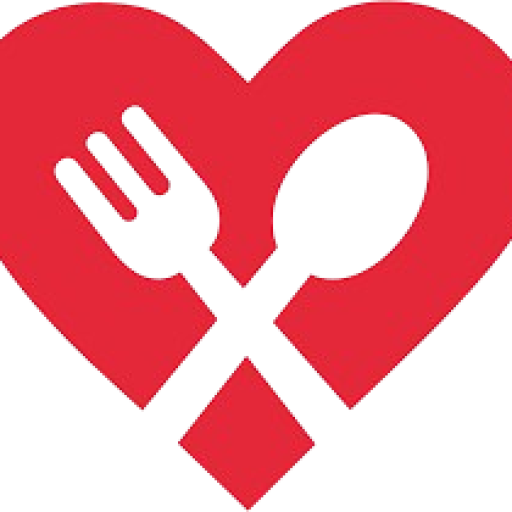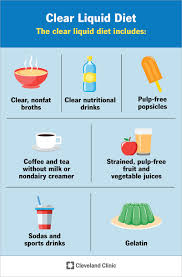Clear liquid diet
Clear liquids such as water, broth and gelatin are prescribed for a short time before or after some medical procedures or if you have digestive problems.By Mayo Clinic Staff
Definition
A clear liquid diet limits you to options such as water, broth and plain gelatin. These are easy to digest, and they don’t leave food bits in your digestive tract. Your health care provider may prescribe a clear liquid diet before or after some medical procedures or if you have digestive problems such as vomiting or diarrhea. A clear liquid diet can’t give you all the calories and nutrients you need. So it generally shouldn’t be continued for more than a few days.
Clear liquids may have some color. Liquids with some color are allowed if you can see through them. Foods can be considered liquid if they partly or completely melt to clear fluid at room temperature. You can’t eat solid food while on a clear liquid diet.
Purpose
A clear liquid diet is often used before tests or procedures that require an empty stomach or clear intestines. For example, you may need to have a clear liquid diet before a colon exam, also called a colonoscopy. Or you may need to be on a clear liquid diet before and after certain types of surgery. A clear liquid diet may be recommended for a short time if you have certain digestive problems, such as nausea, vomiting or diarrhea.
Diet details
A clear liquid diet helps give you enough fluids to stay hydrated. It also provides electrolytes such as sodium and potassium. This diet gives your body some energy at a time when you can’t eat a full diet.
The following items are often part of a clear liquid diet:
- Water, plain, carbonated or flavored.
- Fruit juices without pulp, such as apple or white grape juice.
- Fruit-flavored beverages, such as fruit punch or lemonade.
- Carbonated drinks, including dark sodas, such as cola and root beer.
- Gelatin without fruit.
- Tea or coffee without milk, cream or nondairy creamer.
- Sports drinks.
- Clear, fat-free broth such as bouillon or consomme.
- Honey or sugar.
- Hard candy, such as lemon drops or peppermint rounds.
- Ice pops without milk, bits of fruit, seeds or nuts.
Depending on your medical condition, your health care provider may make changes to the list of allowed liquids. For certain tests, such as colon exams, your provider may ask you to stay away from liquids or gelatin with red coloring. Avoid liquids or foods that are not on the list you get from your provider.
To keep from feeling hungry and to stay hydrated, drink a variety of clear liquids throughout the day.
Results
The clear liquid diet is not very exciting. But it’s designed to keep your stomach and intestines clear. It also limits strain on your digestive system while giving your body enough fluid.
Risks
A clear liquid diet can’t give you all the calories and nutrients you need. Only use the clear liquid diet as directed by your health care provider.
If your provider prescribes a clear liquid diet before a medical test, be sure to follow the diet instructions exactly. If you don’t follow the diet exactly, you may not have correct test results. Or you may have to reschedule your test for another time.
If you have diabetes, talk with the health care provider who helps manage your condition. Your provider can give you specific instructions to help manage your blood sugar, also called blood glucose, while on a clear liquid diet. Test your blood glucose levels often. Return to solid foods as quickly as possible.

